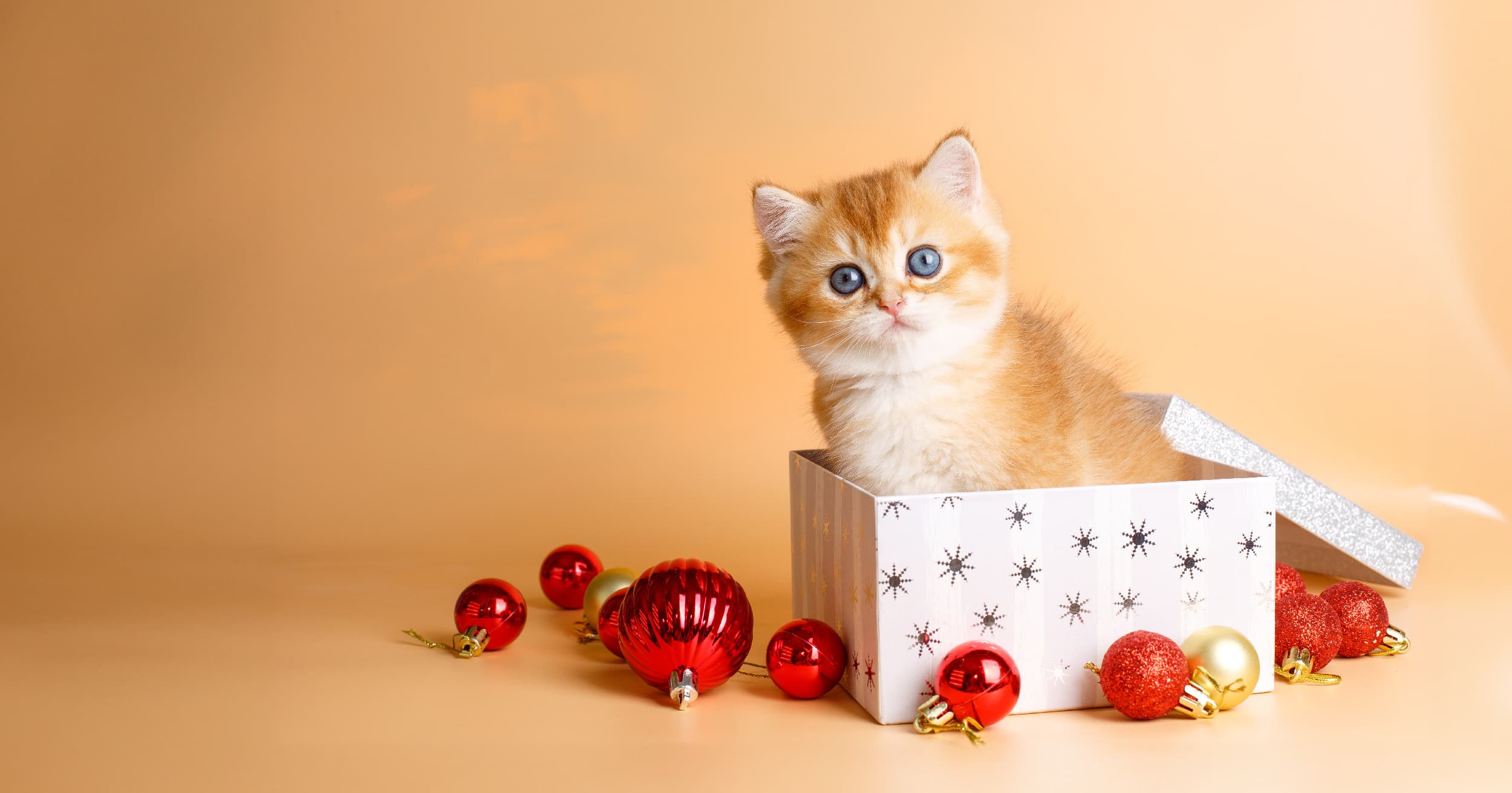- December 12, 2023
Why Do Cats Like Boxes?

“If it fits, I sits,” goes the popular cat meme. If you’ve spent time around a cat, you know that they will sit in anything if there’s even the smallest amount of space. Cats and boxes go together like Christmas and gifts. And with the holidays just around the corner, don’t be surprised if your feline friend likes the box more than the actual gift that was in it.
But why are cats and boxes such a great…fit? Well, truly knowing why a cat does what a cat does isn’t always possible, but there are theories about why cats love boxes.
Cat Love Boxes Because It’s in Their DNA
Though your housecat doesn’t have to hunt to survive, their ancestors did. Since the beginning, cats have been “ambush predators,” meaning that they catch or kill prey using the element of surprise. They find a hiding place and they wait for the opportunity to pounce. While your ankles might not technically be “prey,” if you’ve ever been swatted while walking past a dark corner, you can see how this behavior has been handed down over the generations even though the only thing your cat has hunted lately has been the pet pantry. It’s just in their blood to hide, and what better place to hide than a nice, dark box? Bonus points if the flaps close but don’t seal for optimal pouncing access.
Boxes Are Comforting to Cats
While any box is fair game to a cat, it’s fair to say that they seem to prefer smaller spaces. The tightness of a smaller box might feel like a comforting hug. Everyone likes a good squeeze, and there’s science to prove it. According to a study published in the Journal of Child and Adolescent Psychopharmacology:
“Deep touch pressure is the type of surface pressure that is exerted in most types of firm touching, holding, stroking, petting of animals, or swaddling. In contrast, light touch pressure is a more superficial stimulation of the skin, such as tickling, very light touch, or moving hairs on the skin. In animals, the tickle of a fly landing on the skin may cause a cow to kick, but the firm touch of the farmer’s hands quiets her. Occupational therapists have observed that a very light touch alerts the nervous system, but deep pressure is relaxing and calming.”
Whether it’s from the snugness of the tight space or just having their own little place to call their own, boxes have proven to be calming for cats in stressful situations. In one study, shelter cats suffering from chronic stress showed a distinct reduction in stress levels if they were given a “hiding box.”
Cats Like Boxes Because They’re Cozy
It’s proven that cats like to be warm, and not just by the fact that they are always trying to sit on your laptop. The National Research Council once reported that a cat’s preferred temperature is from 86 to 97 degrees F, which is far toastier than most people keep their homes (although it sometimes doesn’t seem this way when you’re at Grandma’s for a holiday gathering!). Seeking warmth when you’re cold is a survival instinct, and what better way to get warm than by snuggling into a cozy box that you can quickly raise to your body temperature? Since most cats sleep 12–18 hours per day, it’s no wonder that boxes are so popular among the feline set. A good box solves a whole lot of cat problems!
Boxes Are Scratchworthy
Anyone with a shredded piece of furniture knows that cats love to scratch. Even declawed cats like to go through the motions of scratching. But what cats love to scratch most is textured things, and a brown cardboard or corrugated box provides oodles of texture for their pointy little claws to shred. And better a shredded box than a shredded couch, right?
Let Your Cat Box Themselves In
So when your cat turns their little nose up at their real presents this holiday season and opts to check out all the discarded gift boxes around the house, don’t be offended.
If you could find one item for your life that provides warmth and comfort, offers a great place to nap, destresses your life and lets you exercise your most compulsive hobbies, wouldn’t you spend as much time there as possible? That’s what boxes do for cats.
RELATED POST: STRESS COULD OPEN CATS UP TO PANDORA SYNDROME
Tags
What do you think?
Related Articles

New Puppy Checklist: Gear You’ll Need for Your New Dog
Getting a new puppy is really exciting, but before you welcome them home, it’s important to prepare your space for them. Since puppies need a

How Big Do Mini Poodles Get? Vet Reviewed Average Weight & Growth Chart – Dogster
The information is current and up-to-date in accordance with the latest veterinarian research. Learn more » When you buy a Miniature Poodle, you might not

Can Police Dogs Smell Nicotine? Vet Verified Facts & Info – Dogster
The information is current and up-to-date in accordance with the latest veterinarian research. Learn more » While cigarette sales have been declining steadily for decades,

How Old Is 5 in Dog Years? Vet-Approved Guide to Each Size of Dog – Dogster
The information is current and up-to-date in accordance with the latest veterinarian research. Learn more » A common method for calculating a dog’s age is

